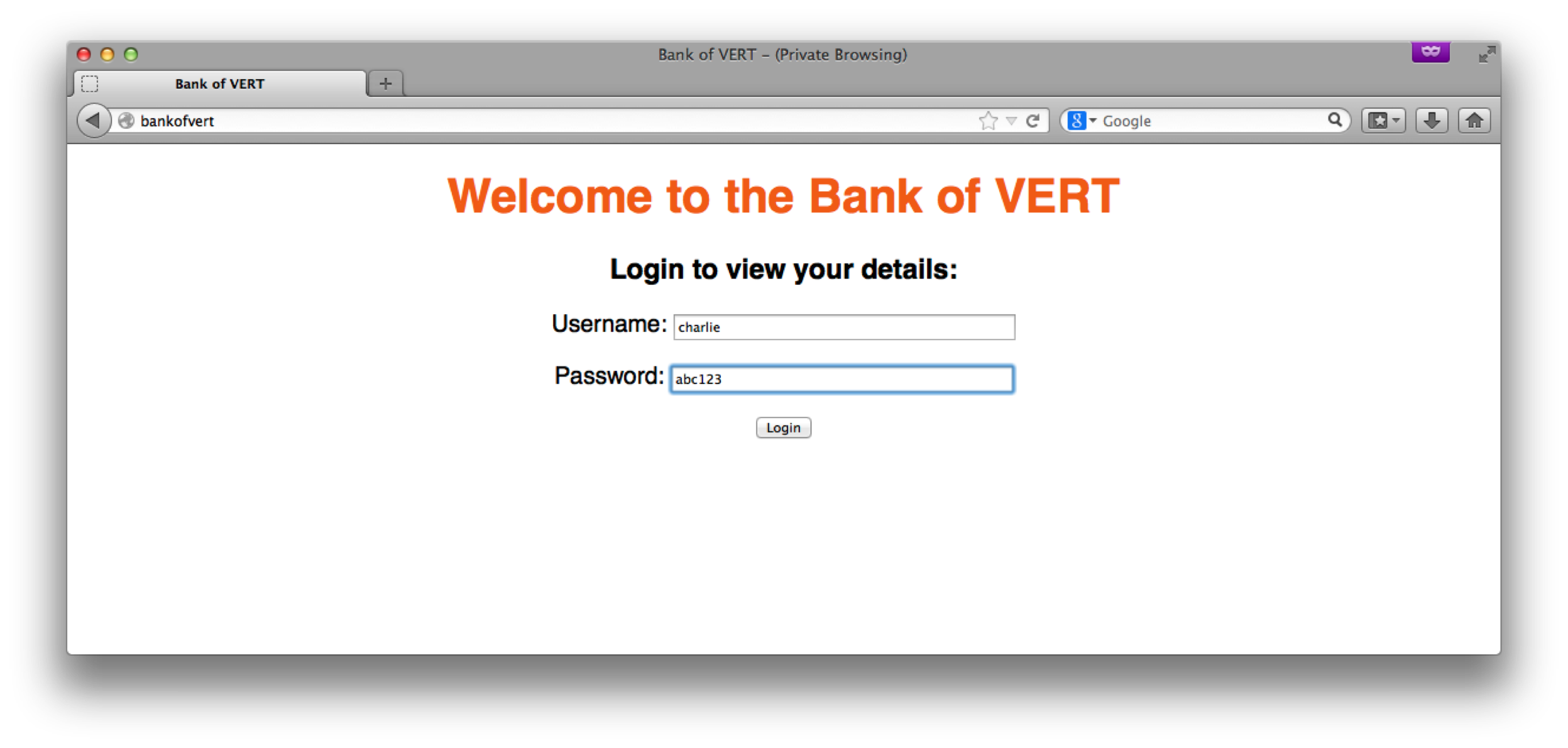
SQL injection is arguably the most severe problem web applications face. OWASP, an online community devoted to web application security, consistently classifies injection vulnerabilities as number one on their OWASP Top 10 Project. SQL injection vulnerabilities are a favorite amongst a number of “hactivist” groups whose aim is to cause disruption in the corporate community because they are relatively easy to discover and exploit. As a result, a number of major corporations and groups have fallen victim to SQL injection vulnerabilities. In this series of VERT Vuln School, we’re going to play the role of an attacker and demonstrate how SQL injection vulnerabilities are discovered and exploited. Throughout this series, we assume that the reader has little-to-no knowledge of how SQL injection vulnerabilities are discovered or exploited, and therefore we provide low-level details on how attackers leverage these vulnerabilities. To begin, we introduce our custom vulnerable web application, the Bank of VERT:

Upon logging in as a normal user of the Bank of VERT website (in this case, as the user “charlie”), we’re able to select an account for which we’d like to view the balance for:

Clicking on our account number reveals how much money we have in that particular account:

This web application, while seemingly basic, contains fundamental issues that plague even the most popular and well-developed web applications. The first issue we’ll look at is authentication bypass.

One of the most common checks for SQL injection is the injection of ' or '1'='1 Let’s see what happens when this is injected into the password field of our web application, along with a username that probably doesn’t exist, fakeusername.

We’re logged in as the user bob. How and why did this happen? Let’s take a look at some of the code: // check if login request if(isset($_POST['username']) and isset($_POST['password'])) { // craft vulnerable query $query = "SELECT * from users where username='" .$_POST['username']. "' and password='" . $_POST['password'] . "'"; // get result of query from mysql $res = mysql_query($query); // if $res is false, query failed if(!$res) { $message = 'Login failed'; } else { // retrieve result set $row = mysql_fetch_assoc($res); // if username is set, the query was successful // set session variable and redirect if(isset($row['username'])) { $_SESSION['username'] = $row['username']; header('Location: http://bankofvert/account.php'); die(); } else { $message = 'Login failed'; } } } This is a snippet of code from index.php which performs the authentication portion of the Bank of VERT website. The important thing to note about this code is how the query is crafted: $query = "SELECT * from users where username='" .$_POST['username']. "' and password='" . $_POST['password'] . "'"; Even if you don’t know PHP, you can clearly see that the login-form variables, $_POST['username'] and $_POST['password'] are being directly inserted into the query. This is bad. To see why, let’s see what a normal query looks like, and what the query looks like after it contains attacker-tainted data. Let’s assume our normal user charlie is logging in with his password abc123. The crafted query (after PHP inserts these values into the query) will appear as follows: $query = "SELECT * from users where username='charlie' and password='abc123'"; Once this query is sent to the DBMS, if there is a record where the username is charlie and the password is abc123, a result is returned (effectively meaning that the credentials were correct). Conversely, if there is not a record in the database where the username is charlie and the password is abc123, no result is returned (effectively meaning that no user with these credentials exist in the database). Now, let’s take a look at what the query will look like once the attacker submits tainted-data: $query = "SELECT * from users where username=' fakeusername' and password='' or '1'='1'"; We can see that by injecting ' or '1'='1 into the password field, the attacker is effectively breaking out of the password string of the query using a syntactically-correct snippet of SQL. As a result of doing so, he/she is controlling the overall true/false-ness of the query, effectively causing the where clause of the query to become always true (since the or operator has lower precedence than and, and because 1 is always equal to 1). Once this query is sent to the DBMS, all records from the table are returned. In our case, the first record in the database belongs to user bob, and since bob’s database record was on top of the result-set, the web application allows the attacker to authenticate with bob’s account. This was a detailed example of how SQL injection can be used to bypass authentication. In the next installment of this series, we will see how an attacker can use a SQL injection vulnerability to steal sensitive data. For those that would like to try out SQL injection first hand at home (and not in your production environments), the source code for the Bank of VERT is available here. Title image courtesy of ShutterStock
Mastering Security Configuration Management
Master Security Configuration Management with Tripwire's guide on best practices. This resource explores SCM's role in modern cybersecurity, reducing the attack surface, and achieving compliance with regulations. Gain practical insights for using SCM effectively in various environments.

